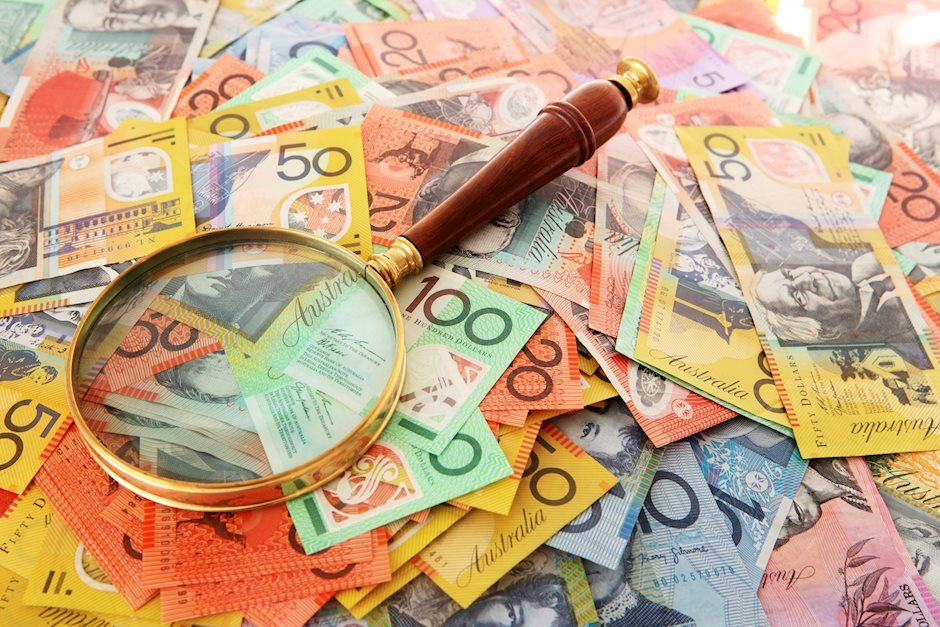Australian Dollar struggles under pressure as Fed policy shifts
- The Australian Dollar edges to 0.6392 but fails to hold gains.
- Markets anticipate that the Fed will deliver a hawkish cut.
- Higher US Treasury yields give the USD traction.

The Australian Dollar exhibits a subdued performance in Friday’s session, pressured by a strengthening US Dollar (USD). Markets anticipate the Federal Reserve (Fed) will shift toward a more hawkish stance after Wednesday’s interest rate cut. Despite robust Australian employment data briefly boosting the Aussie, the currency struggles to maintain upward momentum.
Daily digest market movers: Aussie gains clipped by mixed US data and Fed policy shift
- On Thursday, the US Bureau of Labor Statistics reported Initial Jobless Claims at 242K, above 220K forecasts, suggesting a softening labor market .
- November’s Producer Price Index (PPI) rose 3% YoY with core PPI at 3.4%, both exceeding expectations and indicating persistent inflation.
- Mixed US data initially fueled speculation of further Fed easing, but the US Dollar Index stayed near 106.79.
- Australian employment data surpassed estimates, adding 35.6K jobs and lowering unemployment to 3.9%, prompting traders to reassess Reserve Bank of Australia policy.
- Odds for a February RBA rate cut fell from 70% to 50%, though the bank maintains a dovish stance, confident inflation is trending toward target.
- Fed Chair Jerome Powell’s comments about a resilient US economy dampened hopes for a “Goldilocks” year-end scenario.
- Also, the sticky PPI figures are making markets expect the Fed to turn somewhat hawkish in next week’s meeting.
AUD/USD technical outlook: Aussie nears oversold conditions amid persistent downward pressure
The Relative Strength Index (RSI) hovers at 34, indicating near oversold conditions and mild downward momentum. Meanwhile, the Moving Average Convergene Divervence (MACD) histogram shows decreasing green bars, reinforcing the bearish outlook. Should these oversold signals deepen, a corrective upward move may materialize.
Australian Dollar FAQs
One of the most significant factors for the Australian Dollar (AUD) is the level of interest rates set by the Reserve Bank of Australia (RBA). Because Australia is a resource-rich country another key driver is the price of its biggest export, Iron Ore. The health of the Chinese economy, its largest trading partner, is a factor, as well as inflation in Australia, its growth rate and Trade Balance. Market sentiment – whether investors are taking on more risky assets (risk-on) or seeking safe-havens (risk-off) – is also a factor, with risk-on positive for AUD.
The Reserve Bank of Australia (RBA) influences the Australian Dollar (AUD) by setting the level of interest rates that Australian banks can lend to each other. This influences the level of interest rates in the economy as a whole. The main goal of the RBA is to maintain a stable inflation rate of 2-3% by adjusting interest rates up or down. Relatively high interest rates compared to other major central banks support the AUD, and the opposite for relatively low. The RBA can also use quantitative easing and tightening to influence credit conditions, with the former AUD-negative and the latter AUD-positive.
China is Australia’s largest trading partner so the health of the Chinese economy is a major influence on the value of the Australian Dollar (AUD). When the Chinese economy is doing well it purchases more raw materials, goods and services from Australia, lifting demand for the AUD, and pushing up its value. The opposite is the case when the Chinese economy is not growing as fast as expected. Positive or negative surprises in Chinese growth data, therefore, often have a direct impact on the Australian Dollar and its pairs.
Iron Ore is Australia’s largest export, accounting for $118 billion a year according to data from 2021, with China as its primary destination. The price of Iron Ore, therefore, can be a driver of the Australian Dollar. Generally, if the price of Iron Ore rises, AUD also goes up, as aggregate demand for the currency increases. The opposite is the case if the price of Iron Ore falls. Higher Iron Ore prices also tend to result in a greater likelihood of a positive Trade Balance for Australia, which is also positive of the AUD.
The Trade Balance, which is the difference between what a country earns from its exports versus what it pays for its imports, is another factor that can influence the value of the Australian Dollar. If Australia produces highly sought after exports, then its currency will gain in value purely from the surplus demand created from foreign buyers seeking to purchase its exports versus what it spends to purchase imports. Therefore, a positive net Trade Balance strengthens the AUD, with the opposite effect if the Trade Balance is negative.
Author

Patricio Martín
FXStreet
Patricio is an economist from Argentina passionate about global finance and understanding the daily movements of the markets.

















